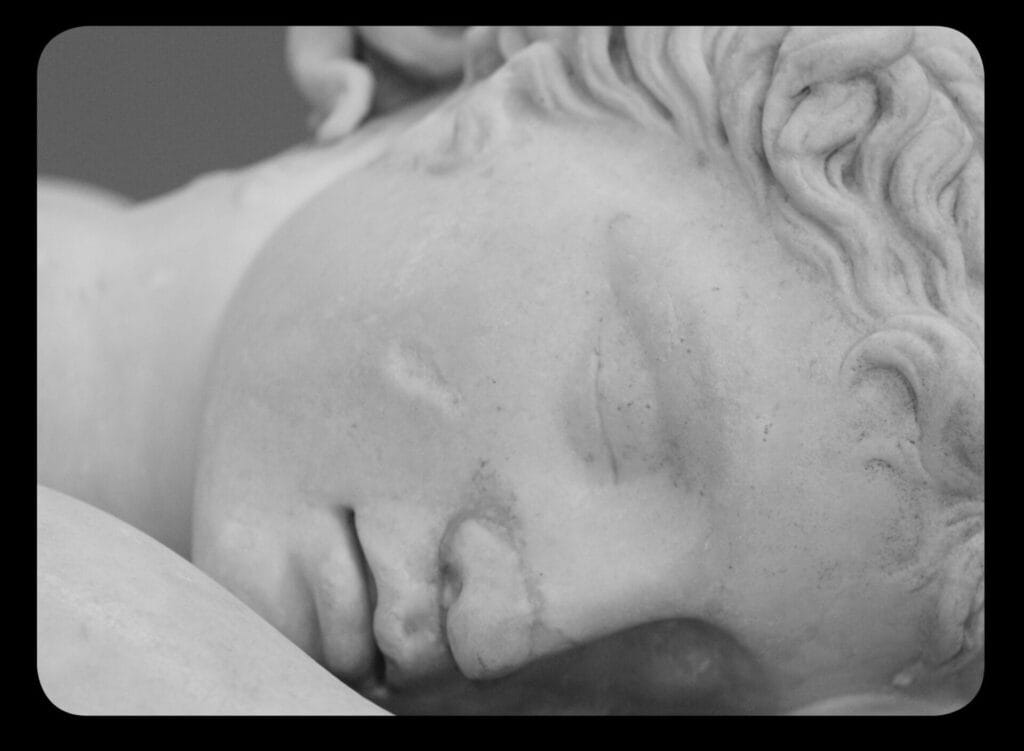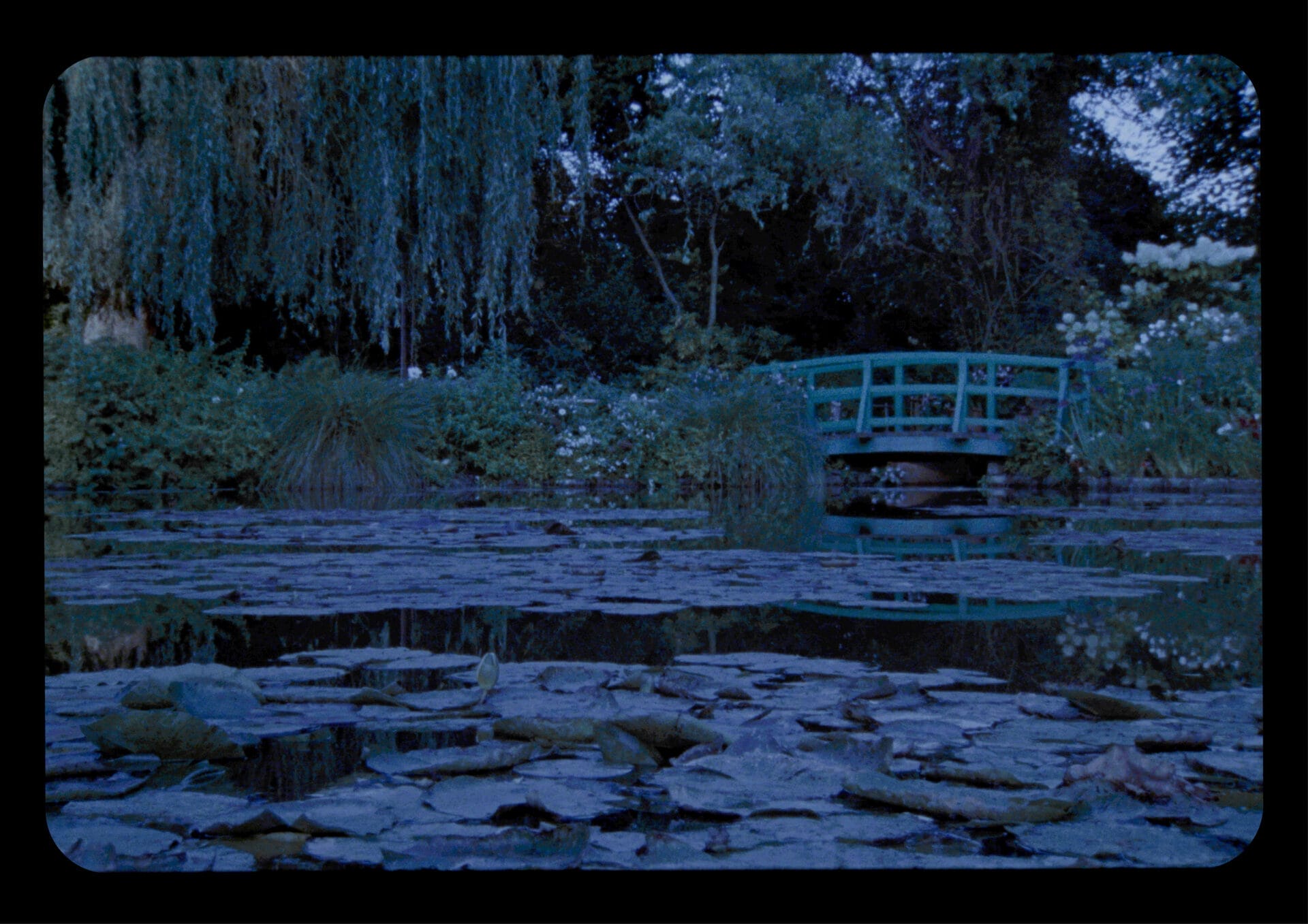From October 24, 2023, through January 21, 2024, the Guggenheim Museum Bilbao will be presenting the exhibition Marine Hugonnier. Field Reports in the Film & Video gallery, a space where the Museum exhibits key works of video art, audiovisual installations, and moving images as artistic language.
On this occasion, the Museum will host a unique installation by artist Marine Hugonnier (Paris, 1969). The core piece in the show, Meadow Report (2021), aims to draw attention to one of the first documents published on climate change, also known as “The Limits to Growth” or “Meadows Report,” which came out in 1972 and predicted the catastrophic consequences of constant unbridled exploitation of the Earth’s resources.
As the title of the exhibition suggests, Marine Hugonnier, who originally trained as an anthropologist, presents a series of works in which she stresses art’s potential to serve as a “report,” yet the space where the artist conducts her inquiry can also be considered a “field” in the sense of both study and a living environment or ecosystem.

35 mm film
Colour, sound, 11 min
Courtesy the artist
© Marine Hugonnier
The piece Meadow Report (2021) reflects this ambiguity. Located in the gallery’s main space, the film shows the famous gardens of Giverny where the impressionist painter Claude Monet painted his celebrated Water Lilies in the last decades of his life, as he was losing his sight due to cataracts. Hugonnier placed the camera in the middle of the pond at dusk, seeking an unusual vantage point on the garden, the outlines of the water lilies, and Monet’s iconic green bridge.

35 mm film
Colour, sound, 11 min
Courtesy the artist
© Marine Hugonnier
The film is one uninterrupted take until all 122 meters of a complete celluloid spool were used, which gives it a tangible limit that becomes apparent when seeing the huge projector in the exhibition gallery. At some point in the shot, the artist removed the camera lens in order to expose the film directly to the environment, which created an abstract image that reflects the shimmering light as well as the movements of the beings present on the quiet summer night the filming took place.
A large-scale photograph entitled Towards Tomorrow (2001) is displayed in the exhibition’s anteroom. It was taken from the US side of the Bering Strait in Alaska, looking towards the Siberian coast. Even though the distance between both places is merely forty miles, the time zone in Siberia is set 24 hours ahead of the one in Alaska, which means that the photograph is simultaneously a record of the past and the future, playing with the concepts of temporality and memory, which are intrinsic to photography.

Lambda print mounted on aluminium
Courtesy the artist
© Marine Hugonnier
Across from this photograph is the film entitled Desire Is Not Much, but Nonetheless… (2015), a study of Sleeping Hermaphroditus, the classical Roman sculpture in the Louvre Museum in Paris. The sculpture dates from the second century AD, and in 1622 the Italian sculptor Gian Lorenzo Bernini crafted the marble mattress on which it currently lies. Marine Hugonnier’s film reveals Hermaphroditus’s body as the camera runs over the curves of the marble sculpture, whose feet and lips have been digitally animated. Brief color sequences interrupt the otherwise continuous blackand-white film loop. The film tries to envision what desire would be in a body that transcends the conventional binaries, encouraging viewers to critically consider the possibility of a non-gendered gaze.

16 mm film and computer generated animation
Black and white and colour silent 5 min
Courtesy of the artist and Marian Goodman Gallery
© Marine Hugonnier
These works illustrate the artist’s interest in challenging the traditional image capturing devices, along with their technical components—cameras, lenses, sensitive film—with all their limits, by exposing them to natural agents and phenomena, thus offering a counterpoint to the social focus of her pieces.
Marine Hugonnier. Biography
Through her films and installations, Marine Hugonnier explores the way ideologies, desires, and discourses converge in the forms of artistic representation. Her inquiry into the politics of vision seeks to shed light on the underlying mechanisms of power in the current capitalist era, where economic acceleration and image reproduction technologies have evolved simultaneously while preserving colonialist and patriarchal biases at their core.
Marine Hugonnier was born in Paris in 1969 and currently lives in London. Her works have been featured in many international exhibitions, including solo presentations in art institutions such as Jeu de Paume in Paris, Villa Romana in Florence, Kunstverien Brauschweig, Die Tankstelle Berlin, Konsthall Malmö and the 52nd Venice Biennale. Likewise, many museums have Hugonnier works in their collections, including the Arts Council, England; Fundaçao Serralves, Portugal; Fondazione Sandretto Rebaudengo, Turin; FNAC—Fonds National d’Art Contemporain, France; MACBA—Museu d’Art Contemporani de Barcelona; MoMA—The Museum of Modern Art, New York; MAM—Musée d’Art Moderne de la Ville de Paris; The National Gallery of Art, Washington, D.C.; Museo Nacional Centro de Arte Reina Sofía, Madrid; and Museo Jumex, Mexico. Besides, Marine Hugonnier holds a PhD and she is a professor at the Karlsruhe University of Arts and Design, in Germany.
[tribe_event_inline id=”1134389″]
{title}
Start Date: {start_date}
End Date: {end_date}
Venue: {venue:name}
Address: {venue_address}
{url}View this event{/url}
{thumbnail}
[/tribe_event_inline]
